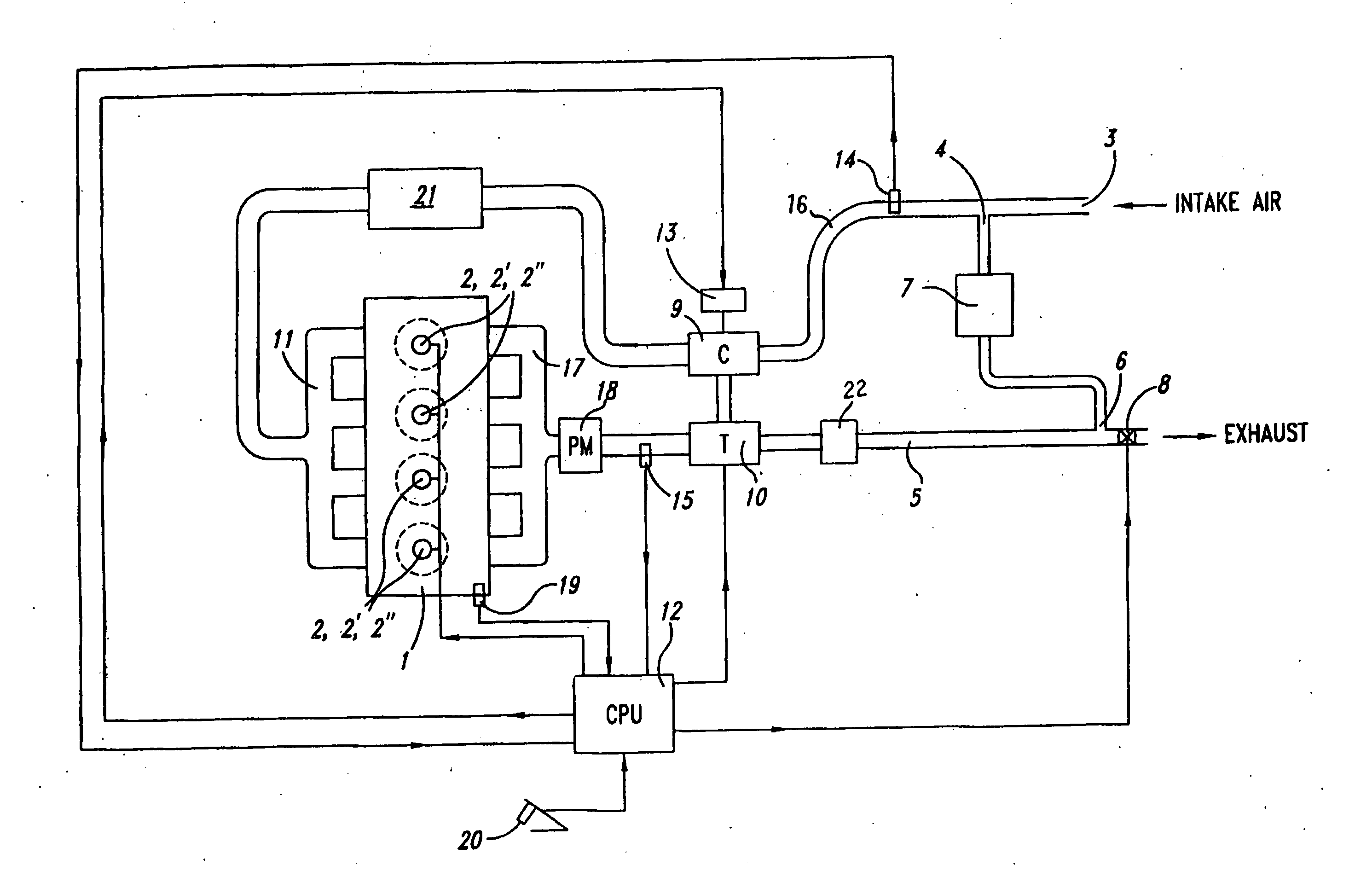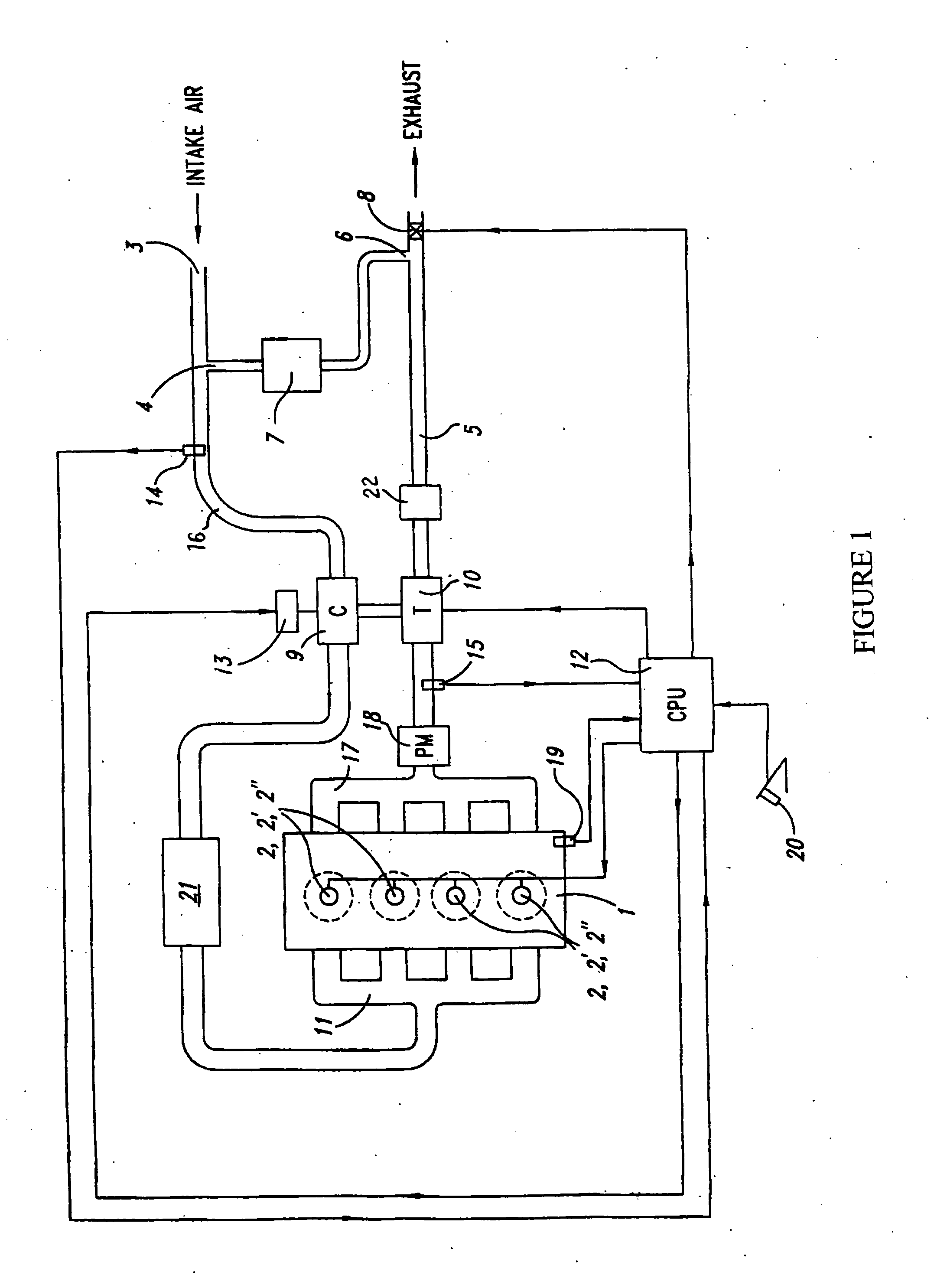Control methods for low emission internal combustion system
a control method and internal combustion technology, applied in the direction of electric control, machines/engines, mechanical equipment, etc., can solve the problems of increasing smoke formation, nox aftertreatment technology as presenting cost and durability challenges, and the extent of egr use is generally limited, so as to reduce nox formation and increase the transient response time , good transient response tim
- Summary
- Abstract
- Description
- Claims
- Application Information
AI Technical Summary
Benefits of technology
Problems solved by technology
Method used
Image
Examples
Embodiment Construction
[0023] An internal combustion engine system with low pressure EGR is shown in FIG. 1 in schematic form. It may be noted that FIG. 1 is similar to FIG. 1 of applicant's recently issued U.S. Pat. No. 6,857,263.
[0024] Referring to FIG. 1, an internal combustion diesel engine 1 is shown. Engine 1 receives fuel through direct cylinder fuel injectors 2, 2′, 2″, etc. Engine speed is provided to controller (CPU) 12 by speed sensor 19. Torque command level is provided to controller 12 by accelerator pedal sensor 20. Ambient air enters intake line 16 at port 3. Exhaust gas blends with the ambient air at port 4, thereby forming a charge-air mixture. Exhaust gas is routed from exhaust pipe 5 at port 6 through exhaust gas cooler 7 to port 4. EGR control valve 8 is located just downstream of port 6 in exhaust pipe 5. By restricting flow through valve 8, exhaust gas flow rate through port 6 is controlled. The combined ambient air and recirculated exhaust gas (collectively “charge-air”) flows thro...
PUM
 Login to View More
Login to View More Abstract
Description
Claims
Application Information
 Login to View More
Login to View More - R&D
- Intellectual Property
- Life Sciences
- Materials
- Tech Scout
- Unparalleled Data Quality
- Higher Quality Content
- 60% Fewer Hallucinations
Browse by: Latest US Patents, China's latest patents, Technical Efficacy Thesaurus, Application Domain, Technology Topic, Popular Technical Reports.
© 2025 PatSnap. All rights reserved.Legal|Privacy policy|Modern Slavery Act Transparency Statement|Sitemap|About US| Contact US: help@patsnap.com



